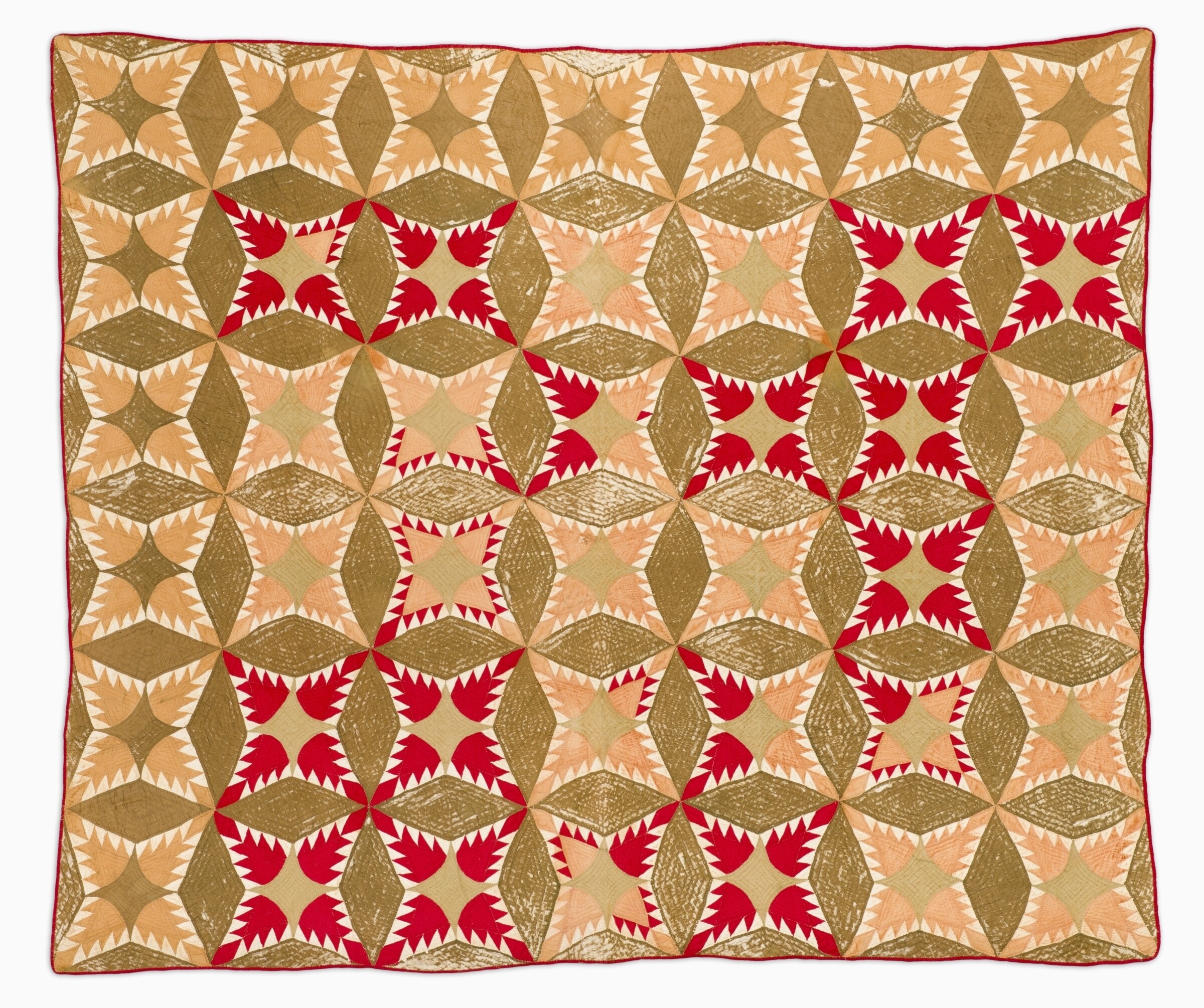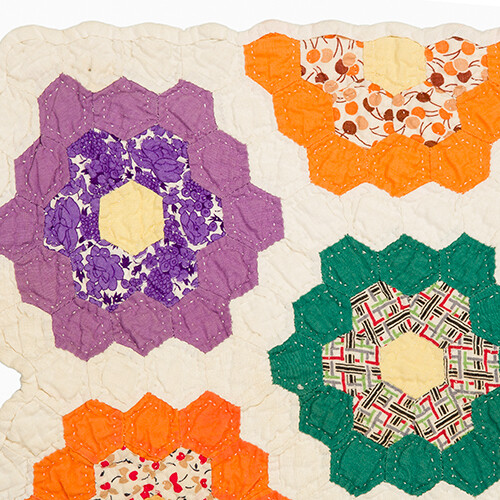Hand- and machine-stitched quilts display the great skill, ingenuity, and creativity of their makers. Examples include pre-Civil War, Amish, African American, Log Cabin, Red and White, Charm, and Album quilts, as well as a linsey-woolsey quilt from around 1800.
American QuiltsWhen I think of the physical manifestation of purple, I envision plants—fragrant herbs such as lavender and deeply pigmented flowers such as the morning glory. However, when I consider symbols or words associated with purple, my mind instantly goes to royalty and power. While this personal connection exists due to the various art history classes I've taken, I never paid any mind to the reason why purple is linked to royalty, or more broadly, social class. In this Unfolding story, I take a brief look into purple and its connection to textiles, nature, and social class through the lens of quilts and fabrics.
As we explore purple in the context of quilts, I invite you to focus on natural purple dyes made from plants, such as madder and logwood, and animals like cochineal and the murex [sea] snail.
My Quilt Research Fellow position is made possible through support from the Terra Foundation for American Art.











